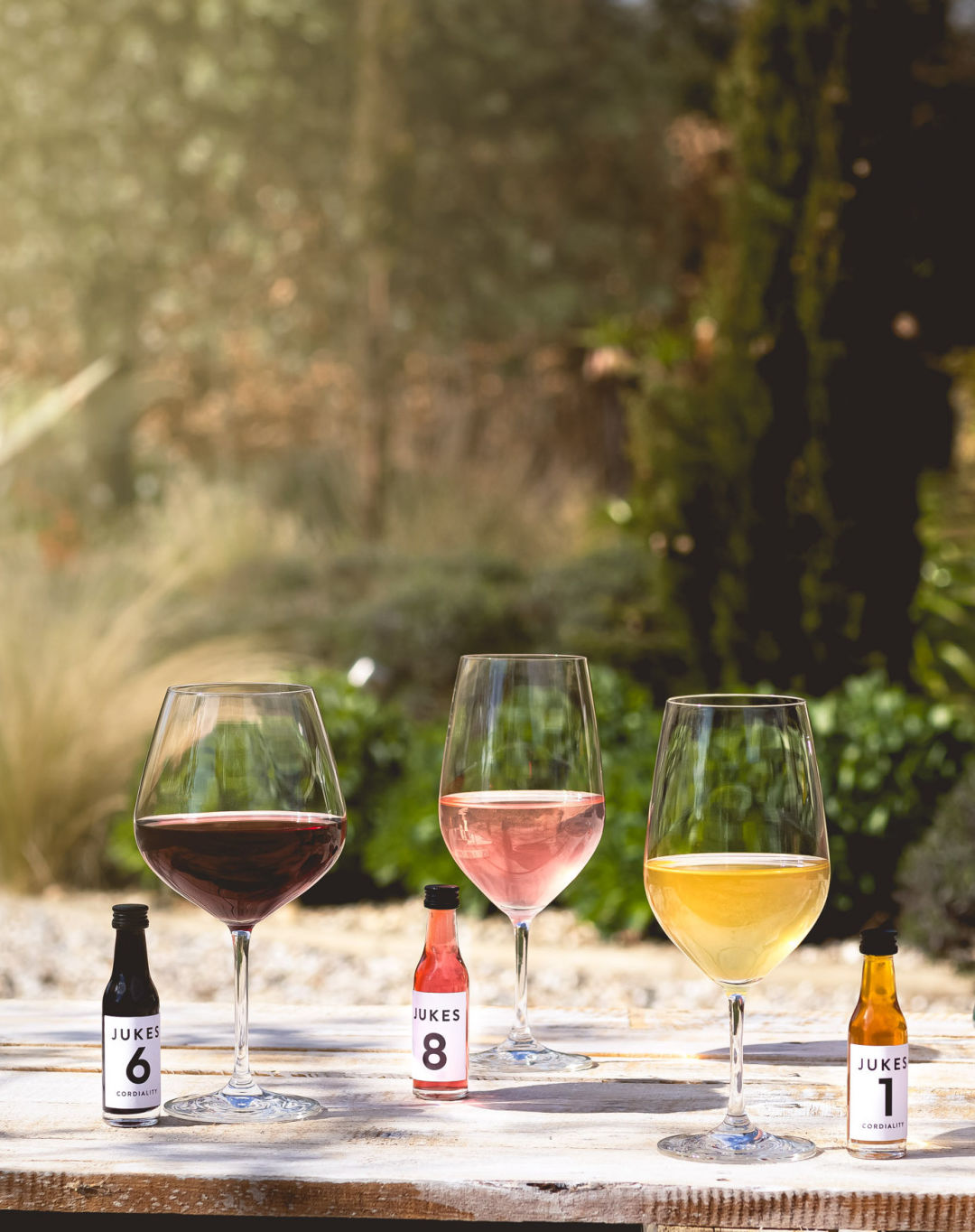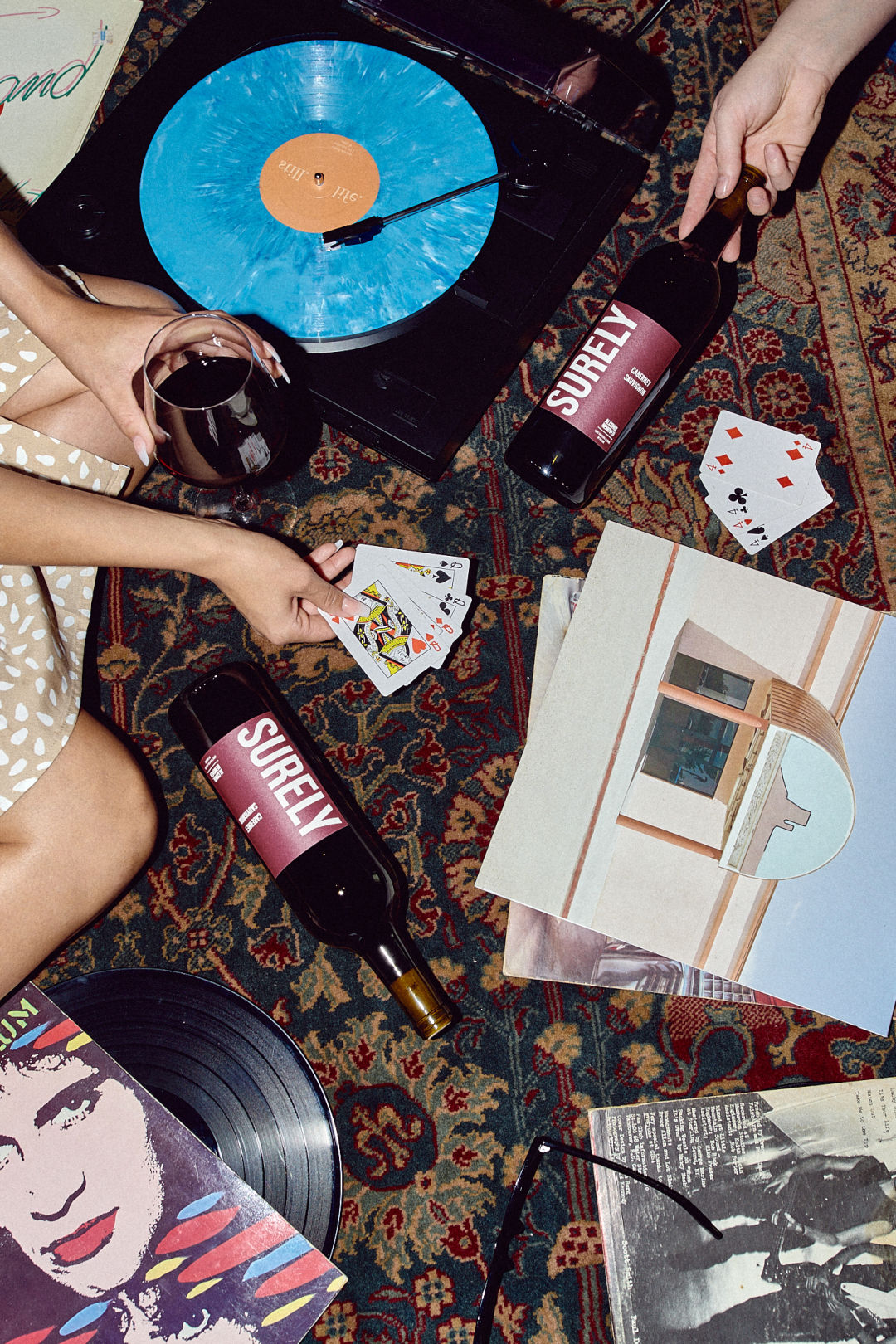Cutting Your Alcohol Use in January? Try Low-Alcohol Or Alcohol-Free Wines.

Jukes Cordialities makes non-alcoholic drinks that mimic wines.
Image: Johnny Stephens Photography
It’s amazing that the highest month for wine consumption is followed by the lowest.
After a month or more of parties and other social gatherings involving wine or other alcoholic beverages, it’s time for a reality check. Much of that has to do with New Year’s resolutions. The one most related to wine is “Dry January,” which began in 2012 as an initiative by Alcohol Change UK, a British charity, to “ditch the hangover, reduce the waistline and save some serious money by giving up alcohol for 31 days.”
Millions of people now take part in the challenge, with more Americans taking notice each year. Unfortunately, more than 45 percent of participants quit before the month is half over.
The concept is a version of fasting. Fasting, if done right, is beneficial for most people and a reduction in alcohol use certainly has its benefits. One way to maintain a positive attitude toward reducing your alcohol usage is to imagine its effect on your health. Perhaps consumption was unnecessarily high and a cutback is in order. Perhaps consumption exceeded medical guidelines and can now be affecting your health. Or perhaps usage was caused by stress or other factors which could put you on a slippery slope to addiction. Unfortunately, some individuals subscribe to a dry January and try to make up the lost quantities in February. This is the worst possible outcome.

Surely is a non-alcoholic wine maker based in California.
Image: Courtesy Photo
Other than forego wine in total, consider the alternatives. “No alcohol” wines are wines in which the alcohol has been removed. In some cases, the taste, as well. The attraction of these wines, beyond the absence of alcohol, is the low calorie and carb numbers, roughly half of what is found in most wines.
Many new options for no alcohol wines have appeared and old standbys remain. In a recent column, Master of Wine Liz Thach produced a compendium of these wines. Fre and St. Regis have been around for some time. Both offer around 50 calories per five-ounce serving and between 10 and 16 carbs. They also have five or more selections of traditional varietals, such as chardonnay and cabernet sauvignon.
New entries, such as Jukes Cordialities and Surely Wines, have lower calories (17-18) and lower carbs (from four to five) per five-ounce serving. Jukes offers generic wines, such as red, white and rosé. Surely offers traditional varietals, such as sauvignon blanc and cabernet sauvignon. Some are only offered in cans. A Sarasota company imports Buonafide 0.0 alcohol-free Italian wines and sells them online and at Total Wine & More and Whole Foods Markets in Florida.
Another resolution could be “Moderate or Partial January,” in which lower alcohol wines are preferred. To reach the consumer who wants wine flavor, absent in many no alcohol wines, major wineries such as Kendall-Jackson, Kim Crawford and Bota Box have entered the market with wines at between 7 and 10 percent alcohol. In most cases, these are traditional varietals, with chardonnay and pinot grigio topping the choices.
There is a neverending supply of new products to attract health-conscious drinkers. Recently, it was seltzers and wine spritzers, with alcohol content around 5 percent, similar to beer. Now, Constellation Brands has partnered with Coca-Cola to bring out alcoholic Fresca, and Corona adds vitamin D and removes the alcohol in its latest beer. If you're trying to stick to your New Year's resolution, you've got options.
Bob McGinn has spent his entire career in the wine industry—forming wine clubs, working in wine sales marketing and engaging in all facets of the winemaking process, including vine management, fermentation and yeast analysis. He has developed wine programs for companies such as Marriott, Sheraton and Smith & Wollensky, and consults with local restaurants. You can read more of McGinn’s work at gulfcoastwinejournal.com.